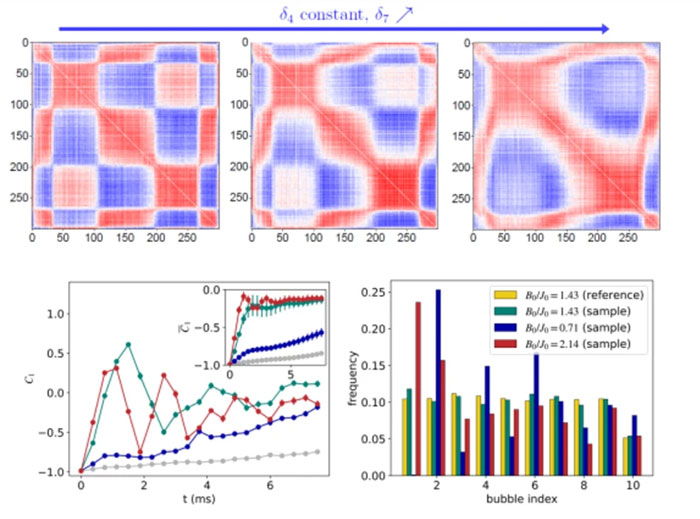China completes the world's largest ion trap quantum simulation
This is the largest quantum simulation or calculation performed to date, which is expected to pave the way for the birth of large-scale quantum computing.
A team of Chinese scientists has completed the world's largest ion-trap quantum simulation, with precise single-qubit resolution, marking a significant advance in the pursuit of large-scale quantum computing.

Typical quantum simulation results of the 300-ion long-range transverse field Ising model. (Source: Nature).
The ion trap - a device that stores ions in a confined space through electromagnetic fields, has the potential to help realize large-scale quantum computing.
However, the main challenge in this method is to simultaneously maintain stable ion trapping and precise control of a large number of ions.
Quantum simulations involving about 200 ions have been reported. However, the inability to distinguish the state of each ion has hindered the extraction of important data, creating a barrier to the development of more flexible and scalable quantum computing applications in the future.
Tsinghua University researchers used frozen monolithic ion trap technology and a 2-D scheme.
The result was the first stable trapping of 512 ions. Additionally, the team successfully performed quantum state measurements with '1-qubit resolution' on 300 ions.
This is the largest quantum simulation or calculation performed to date, which is expected to pave the way for the birth of large-scale quantum computing.
The research has just been published in the scientific journal Nature.
- China built the world's largest quantum facility
- China creates quantum computing chips that are 10 billion times faster than regular chips
- China set a surprising record of quantum entanglement
- 6 types of deadly pitfalls common in ancient tombs
- Developed the most powerful quantum-engineering device
- Quantum theory of awareness: Soul is a form of information
- China claims to own the world's most powerful quantum computer system
- China launched the world's first quantum satellite
- China successfully developed the world's first quantum computer
- Successful implementation of a new experiment for quantum teleportation for the first time
- China's new quantum supercomputer operates
- China's quantum satellite transmits tangled photons into Earth for the first time
 'Fine laughs' - Scary and painful torture in ancient times
'Fine laughs' - Scary and painful torture in ancient times The sequence of numbers 142857 of the Egyptian pyramids is known as the strangest number in the world - Why?
The sequence of numbers 142857 of the Egyptian pyramids is known as the strangest number in the world - Why? History of the iron
History of the iron What is alum?
What is alum?